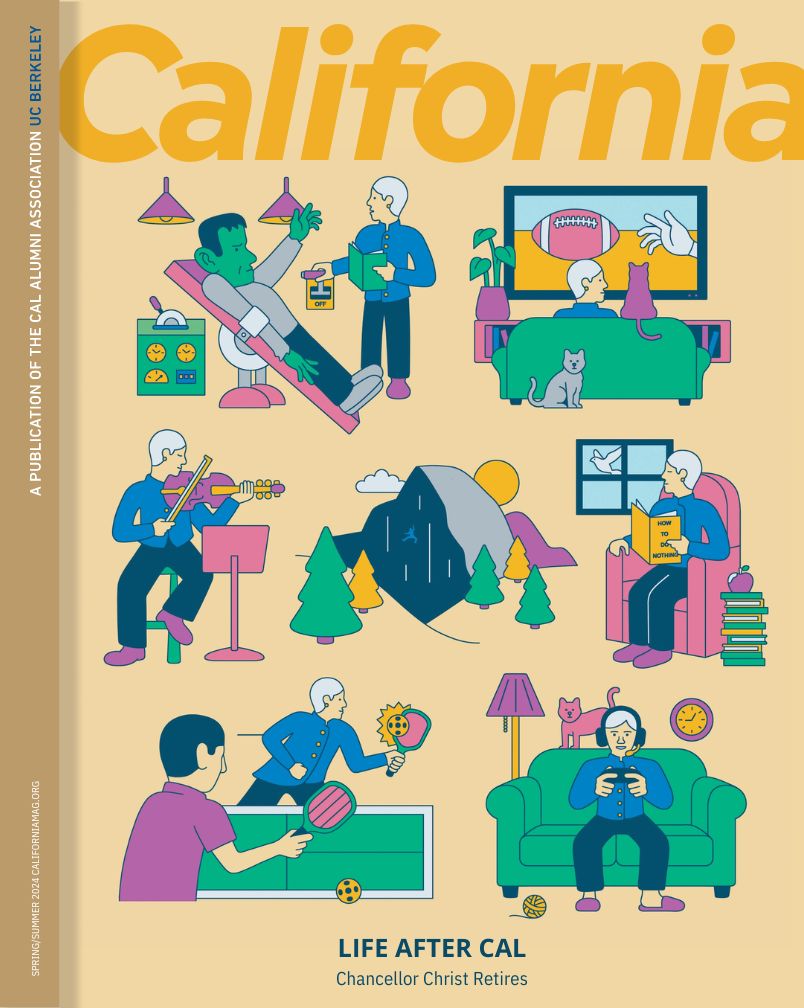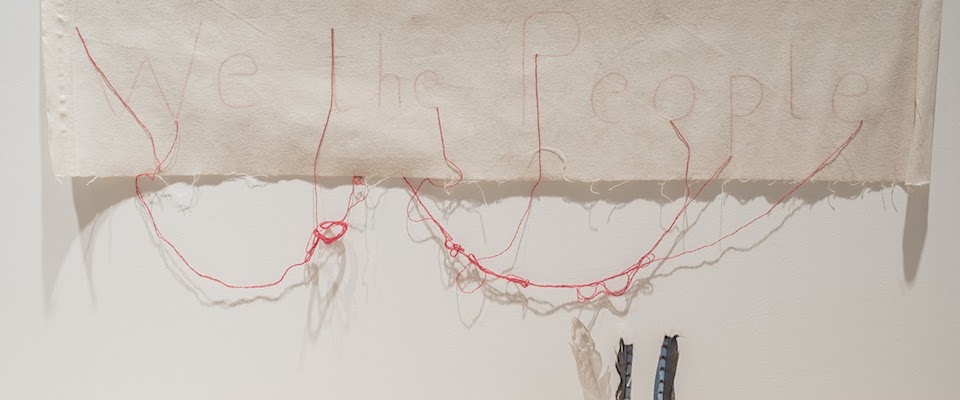Art critic and professor Julia Bryan-Wilson likes process. So when she and Andrea Andersson co-curated About to Happen, a solo show by artist and poet Cecilia Vicuña, she photographed Vicuña gathering materials along the Louisiana coast for a site-specific sculpture at the Contemporary Arts Center in New Orleans. Bryan-Wilson thought those photos would enhance the exhibition. “It was exciting to see it come to life in that way as opposed to learning about it later, really getting to see it from start to finish and seeing her mind work.”
Vicuña’s remarkable presence fills any room she’s in, Bryan-Wilson says. She wanted visitors at the exhibition to sense that and see the artist creating the sculpture Balsa Snake Raft to Escape the Flood, made of discarded objects, driftwood, and bits of plastic.
But Andersson, the chief curator of the CAC, had different ideas.

“Andrea said, ‘You don’t show the person making the work—you show the work,’” Bryan-Wilson said. “The show is imbued with her presence, and you don’t actually need to see her digging stuff out of the Mississippi River to get a sense of that.”
The show started in New Orleans, opened at the Berkeley Art Museum on July 11, and will go on to Philadelphia and Seattle. Vicuñais making a site-specific work for each place. For the Berkeley show, Vicuña created Burnt Quipu, with strings of red, orange, yellow and black yarn hanging down. It recalls the fires burning in California.
Apsara DiQuinzio, the curator of BAMPFA, says Vicuña’s work continues to be relevant. “Her work is so timely in so many different ways. She has been working with quipu since very beginning. It’s an ancient form of recording knowledge used by the indigenous peoples of the Andes,” she said. “This one shows how our California landscape is threatened or imperiled by wildfires. There are currently 10 wildfires burning in California due to climate change, which is a really important subject to her.”
Vicuña, who was born in Santiago de Chile in 1948, was in art school in London when the coup against Salvador Allende happened in 1973, and she decided to stay in London. Her art reflects the politics she was experiencing, Bryan-Wilson says. “I think it’s important to know much of her career was forged in the conditions of exile, and she often worked very small and with poorer materials because she had no money and she didn’t have studio space.”
On the exhibition’s opening night at the Berkeley Art Museum (the show is up through October 14), Bryan-Wilson and Andersson stood in a gallery filled with more than 100 of Vicuña’s precarios, tiny sculptures made with found materials. According to Bryan-Wilson, the contents of About to Happen, including art books, poetry, and videos, are only in a few rooms, so it may seem concise spatially, but in content it’s a massive show.

Selection of Precarios, 1966–2017; 110 found-object sculptures; stone, shells, glass, wood, plastic, thread, net, seeds, paper, cloth, detritus, sand / Alex Marks, Contemporary Arts Center, New Orleans, 2017
Vicuña’s work is particularly relevant now, Bryan-Wilson said, echoing BAMPFA curator DiQuinzio’s sentiment.
“It deals with global climate change and environmental catastrophe and coastal erosion,” continued Bryan-Wilson in an interview after she led a tour of the exhibit. “There’s also attention to that which is normally discarded or overlooked, whether the vein of a leaf that was in the gutter or a piece of metal coil that she scavenged off the streets—literally repurposing trash and making something meaningful out of it because she herself as a Latin American woman has often felt marginal and discarded. A feminist politics of the global south is always part of her work.”
Bryan-Wilson, who got her Ph.D. at Berkeley in 2004, now teaches modern and contemporary art at the university. Bryan-Wilson has published articles in a number of outlets, including Artforum, Camera Obscura, Bookforum, Oxford Art Journal, and TDR: The Drama Review. She is the author of several books, most recently Fray: Art and Textile Politics (The New York Times named it one of the best art books of 2017). It includes a section on Vicuña and features her art on the cover.
“To be intimately involved in the creation of it,” Bryan-Wilson said, “scavenging stuff and being very hands-on in a physical way was thrilling.”
DiQuinzio has known Bryan-Wilson for years, and she calls her a fantastic writer with a lot of insight. “She’s animated and passionate about subjects that interest her, and she chooses subjects worthy of delving into,” she said. “With Fray, she’s getting into an area that needs to be addressed.”
By the looks of it, Bryan-Wilson is as popular a teacher as she is a prolific writer—many of her students attended the opening and enthusiastically applauded her.
She says she enjoyed co-curating her first show, both spending time with Vicuña and making an argument with objects in space rather than with words.
“Getting to know Cecilia more was very meaningful,” she said, “but also to be intimately involved in the creation of it, literally tying knots in the gallery and scavenging stuff and being very hands-on in a physical way was very thrilling.”



















